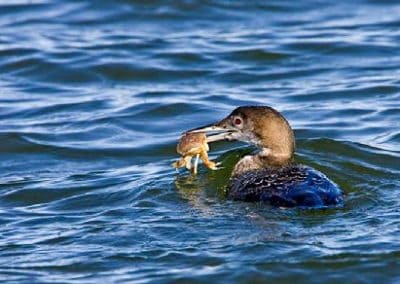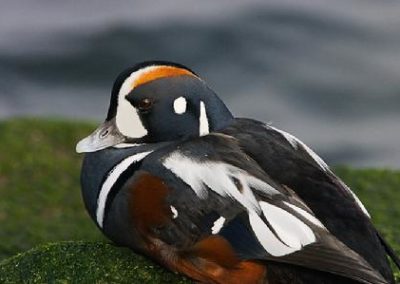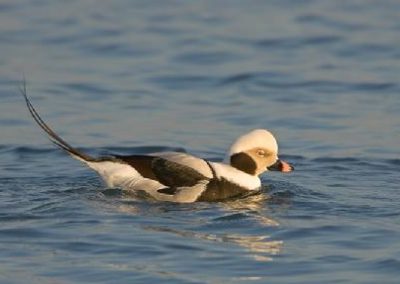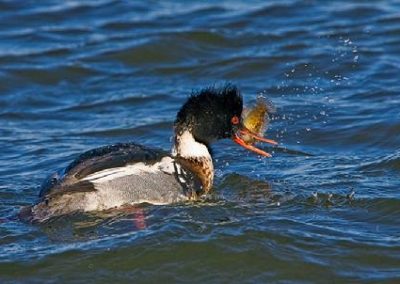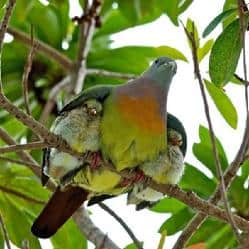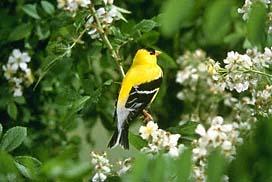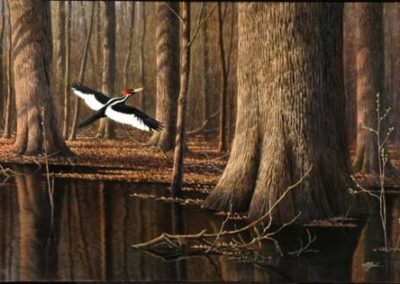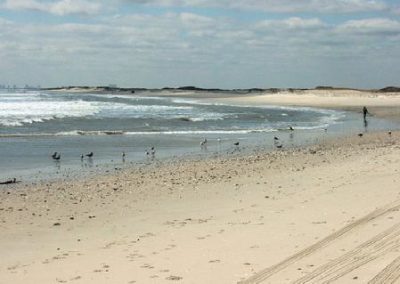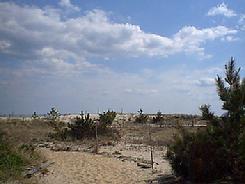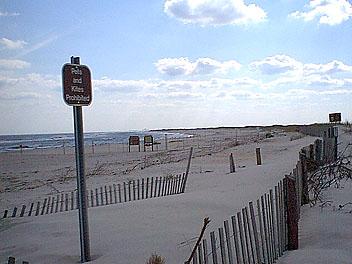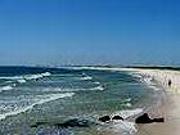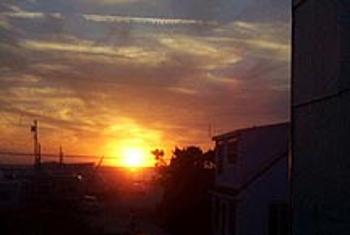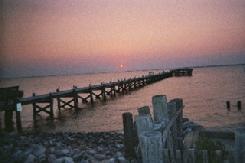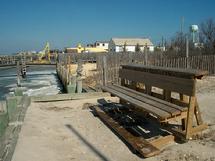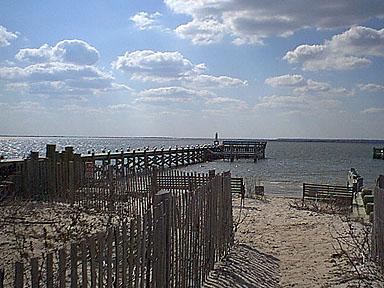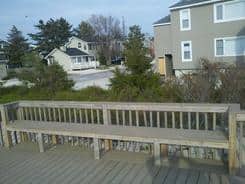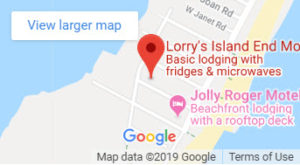Bird Watching (Birding) is One Of The Fastest Growing Hobbies in the United States with Over 46 Million People, and may soon eclipse golfing as the nation’s most favored pastime and recreational activity.
If You Are New To Bird Watching (Birding), further down this page is Birding 101, an introduction to Birding.
Bird Watching (Birding) On Long Beach Island, NJ (While Staying At Lorry’s Island End Motel)Bird Watching (Birding) is One Of The Fastest Growing Hobbies in the United States with Over 46 Million People, and may soon eclipse golfing as the nation’s most favored pastime and recreational activity. If You Are New To Bird Watching (Birding), further down this page is Birding 101, an introduction to Birding. You Will Love Birding As It Is A Very Relaxing Hobby.
8 Great Places For Long Beach Island Birding
1) Forsythe LBI Wildlife Refuge – Only 2 Streets From Lorry’s
2) Sunset Park – Only 1 Street From Lorry’s on LBI, NJ
3) Holgate Bay Beach – Only 3 Streets From Lorry’s on LBI, NJ
4) Barnegat Light State Park on LBI, NJ
5) 8th Street Jetty In Barnegat Light on LBI, NJ
6) Broadway At The Bay In Barnegat Light on LBI, NJ
7) 12th Street In Barnegat Light on LBI, NJ
8) Barnegat Light Yacht Basin on LBI, NJ
The Phenominal LBI Pictures Courtesy Of Bob B. (a Lorry’s Motel Guest) featuring a Common Loon with a crab in its mouth, Male Red Breasted Merganser with a fish in its mouth, and a Male Long Tailed Duck.
Long Beach Island Forsythe Wildlife Refuge
The LBI Holgate Division is Only 2 Streets Away from Lorry’s Island End Motel on Long Beach Island, NJ.People From 47 States And 32 Countries Around The World Come To Lorry’s Motel And See One Of God’s Most Spectacular Beaches In The United States. This end of Long Beach Island, NJ is very narrow and The Ocean is on one side of The LBI Wildlife Preserve and the Bay is on the other side. On a clear day you can see the skyline of the Atlantic City Casinos. In The Distance.The Edwin B. Forsythe National Wildlife Refuge’s Brigantine and Barnegat Divisions contain more than 40,000 acres of southern New Jersey coastal habitat. Refuge headquarters and public use facilities, including an eight-mile Wildlife Drive, observation towers and two short nature trails, are at the Brigantine Division. Best birdwatching opportunities occur during spring and fall migrations. A “Guide to Seasonal Wildlife Activity” is available in the refuge’s general brochure.
Edwin B. Forsythe is one of more than 500 refuges in the National Wildlife Refuge System administered by the U.S. Fish and Wildlife Service. The National Wildlife Refuge System is a network of lands and waters managed specifically for the protection of wildlife and wildlife habitat and represents the most comprehensive wildlife resource management program in the world. Units of the system stretch across the United States from northern Alaska to the Florida Keys, and include small islands in the Caribbean and South Pacific. The character of the Refuges is as diverse as the nation itself.
The Service also manages National Fish Hatcheries, and provides Federal leadership in habitat protection, fish and wildlife research, technical assistance and the conservation and protection of migratory birds, certain marine mammals and threatened and endangered species.
Forsythe Wildlife Refuge Bird Migration Walk: In October they have a “Bird Migration Walk” that starts Only 2 Streets From Lorry’s Motel at the bulkhead near the end of the parking lot of The Forsythe Wildlife Preserve. This bulkhead is at the southern end of Long Beach Boulevard on Long Beach Island, NJ.Experienced birders lead the walk. The Forsythe Wildlife Preserve is on the Atlantic Flyway for birds. Their website is: www.forsythe.fws.gov and their phone number is 609-652-1665 to learn the dates for “Bird Migration Walks” in the future.
LBI Sunset Park On Long Beach Island, NJ
See the Beauty Of Long Beach Island (LBI) Near Lorry’s Motel. Sunset Park Is Only 1 Street From Lorry\’s Motel & Within Easy Walking Distance. Exit Lorry’s Motel and turn towards the bay, go 75 feet and make 1st left on West Ave. then turn right on McKinley. Continue up the street until you reach the small park at the bay With A Bench To Sit On & Relax. There are benches on the Observation Deck to sit, relax and watch the birds
The Observation Deck located at the end of Lorry’s street at the ocean on Long Beach Island, NJ with benches to sit on and relax to watch the birds and hear the peaceful LBI ocean waves.
Holgate Bay Beach – Near Lorry’s Motel On LBI, NJ: 3 Short Streets From Lorry’s Motel
and Within Easy Walking Distance. This beach is a great spot for birding with scattered benches to sit on facing the Bay. It has a children’s playground , tennis & basketball court, plus you can go crabbing and fishing. To get there exit Lorry’s and turn tight towards the Bay. Go only 75 feet and make 1st right onto West Ave. Continue for only 3 streets to the dead end – the Holgate Bay Beach is on the left.
Barnegat Light State Park – Long Beach Island, NJ
The Barnegat Light State Park On LBI Is Perfect For Observing The Many Species Of Migrating Waterfowl During The Spring And Fall. Shorebirds and wading birds, including black-crowned night herons, snowy egrets, and brown pelicans can also be seen.
Renowned among boaters as one of the state’s most treacherous waterways, Barnegat Inlet is equally renowned among birders and beachcombers as one of the most rewarding. It is a beautiful area with an expansive beach, uncluttered by condos, where instead sea, sand, and sky dominate. Here, where land, bay and sea meet with ever-changing tides and currents. “The usual kinds of birds” (“ukobs,” as Karl Anderson calls ’em) are unusually good ones. Here, too, the unexpected is almost — well, expected.
The 172-foot tower of LBI Barnegat Lighthouse is the most prominent landmark anywhere near the inlet; it’s visible from most of northern Long Beach Island, NJ, southern Island Beach Park, and mainland marshes miles across the bay. Known almost universally as “Old Barney,” construction of the lighthouse (in 1858) was supervised by Lieutenant George Gordon Meade, of the U.S. Army Corp of Engineers; he is perhaps somewhat better known for leading the federal forces in the Battle of Gettysburg. A lightship stationed off Barnegat Inlet replaced the land-based beacon in 1927. The property became part of the New Jersey State Park System in 1954. The lighthouse is open from 10:00 to 4:30 daily through Labor Day — which means it’s closed when most birders visit. (For information during park hours, call (609) 494-2016.) On the plus side, the parking is free in winter, and the rest rooms by the entrance usually remain open all year.
To enjoy Barnegat Inlet and vicinity to best advantage, visit between mid-September and mid-April. It’s especially good from November through March. Plan to explore several close-by areas; whereas the birds for which the area is best known are on the ocean at the mouth of the inlet, you’ll need to move around a bit to find the greatest variety. Especially try High Bar, a mile-long dike extending northwest into Barnegat Bay and visible from the inlet. To reach it, go west on Twentieth Street, right onto Arnold, and right again onto Sunset to the end. “Ipswich” Savannah sparrows, American pipits, oystercatchers, and short-eared owls are a few of the species you might see here. Boat-tailed grackles are regular in winter in the nearby marshes. It’s also a great spot for all the bay ducks (scaup, bufflehead, goldeneye, mergansers, and oldsquaw). One January day I had over three hundred oldsquaw here, and their musical ow-owl-omelette call rang continuously — a real Arctic treat to hear!
To reach the bay side of the inlet, follow Long Beach Boulevard north from Ship Bottom; it becomes Central Avenue in the town of Barnegat Light. Continue on Central and bear left onto Broadway, which ends in about a quarter mile. Scan the water and sand bars here for brant, oldsquaw, and a variety of gulls. Oystercatchers are frequently seen except in midwinter. The entrance to the state park is back about 100 feet from the end of the road. In fall, be sure to check the narrow woodlot (hedgerow, really) on the perimeter of the parking lot for migrant land birds. In the holly, sumac, and red cedars, you may find warblers, vireos, thrushes, kinglets, and even sapsuckers. Western kingbird shows up here in late fall/early winter in some years.
From the northeast corner of the parking lot, walk the trail toward the lighthouse. (Be sure to read the historical marker about my six-times great uncle Andrew Steelman first.) The breakwater near the base of the lighthouse gives you another view of the inlet, and you can see across to Island Beach State Park, NJ (A fifty-mile drive!) Scope it for the rare snowy owl or gyrfalcon, highly mobile birds which can be on the dunes on either side of the inlet. (On occasion they’ve been seen on the lighthouse itself, or the water tower in Barnegat Light.) Other raptors — notably peregrines and merlins — are apt to be seen anywhere in the area.
My birding notes over the last two decades are filled with references to the “Eighth Street Jetty.” It’s still there (sort of) — partly crumbled by storms, partly buried in the sand — but in 1987 construction was begun on a new breakwater, parallel to the one on the Island Beach (north) side of the inlet. It’s basically complete now, and there’s a walkway on it which is accessible from the state park. This allows you to survey nearly the entire inlet out to the ocean. The old Eighth Street jetty runs north-eastward from Eighth Street (1/4 mile south of the lighthouse) and ends well before the middle of the new breakwater. Last fall, the harlequin ducks were often inside the inlet, hugging the rocks. For decades, this has been the best and most consistent spot in the state for these beautiful northern ducks. They usually linger until early April, rarely into the first week of May. The triangular lagoon formed by the new breakwater and the old jetty was filled with sea ducks last fall. Ten common eiders and all three scoters were joined by red-breasted mergansers and oldsquaw. King eider also occur here each year. It will be interesting to see how the shifting sands will affect this area; it might fill in completely.
You can still access the new breakwater from the end of Eighth Street, though you won’t have the advantage of the walkway, just rough boulders. Be sure to check them for purple sandpipers, which so perfectly blend in with the rocks that you often don’t see them until they move — and they don’t move until you’re just a few yards away! There are usually just a couple dozen birds present, but flocks of over fifty occur. By scoping the tower at the end of the jetty, you’re sure to see great cormorants all winter long; if they hang around until April, you’ll see their bright white flank patches. There are always double-cresteds among them in spring and fall, rarely (but increasingly) in winter.
Already, a much larger beach area has been created; some of this is seasonally fenced off for beach-nesting birds. Watch along the dunes and open sandy area for American pipits, horned larks, and lapland longspurs in migration and during the winter; I saw my “life” snow buntings here one Halloween Day many years ago, and they still occur annually.
Migrating loons (both common and red-throated) may be seen in numbers during late fall, and a few will be present all winter. Though they are usually silent, on rare (in New Jersey) occasions one may get the thrill of hearing them call; I still remember a January day in ’83 when two wailed back and forth on glass-smooth Barnegat Bay.
One of the thrills of cold weather birding here is the numbers of gannets which may be seen. They can almost always be found with the aid of a spotting scope, and with easterly winds may be quite close to shore — sometimes just beyond the breakers. On such good fall days, you may see several hundred gannets, diving into the ocean with a great splash (which you can see but not hear).
Throughout winter, but especially November and December, as well as March and April, Bonaparte’s gulls may be common, and I have seen both little gull and common black-headed gull here too. Thorough searching through the gull flocks on the beach may reveal lesser black-backed, glaucous, and Iceland gulls present in small numbers each year.
The black-legged kittiwake, one of the truly pelagic gulls, is found here more often than at any other New Jersey site, except perhaps Manasquan Inlet. They are usually far out — I recall a somewhat exaggerated description of their distance from a rare bird alert tape by (I think) Pete Dunne: “Set your Questar high on a dune, aim it at the horizon, focused on infinity; the birds over the island are kittiwakes; the island is Ireland.” Actually, they often follow fishing boats almost into the inlet.
Barnegat Inlet is the starting point for many fishing trips (headboats and charters), and a few which specifically target pelagic birds. Many of these birds are eighty-five miles out, in Hudson Canyon, but very rarely, a jaeger, red phalarope, or alcid may be spotted from shore. Since the mid-1980’s, brown pelicans have been regularly sighted in summer at the inlet, though the highest counts to date (300+ in 1992!) are from the southern part of Barnegat Bay.
What else might you see in this special place? Arctic tern and western grebe are both confirmed here, as is bridled tern (following hurricanes). One lucky field trip a few years ago reported a white-tailed tropicbird! Not found in the binding literature due to observer embarrassment (despite certainty — and no, it wasn’t me) was the flamingo which flew past Barnegat Inlet one summer day. We’ll say nothing of the Macaroni penguin caught swimming in Barnegat Bay in the summer of 1981!
8th Street Jetty In Barnegat Light On LBI, NJ
The Eighth Street Jetty is located in Barnegat Light State Park. It’s still there (sort of) — partly crumbled by storms, partly buried in the sand — but in 1987 construction was begun on a new breakwater, parallel to the one on the Island Beach (north) side of the inlet. It’s basically complete now, and there’s a walkway on it which is accessible from the state park. This allows you to survey nearly the entire inlet out to the ocean. The old Eighth Street jetty runs north-eastward from Eighth Street (1/4 mile south of the lighthouse) and ends well before the middle of the new breakwater. Last fall, the harlequin ducks were often inside the inlet, hugging the rocks. For decades, this has been the best and most consistent spot in the state for these beautiful northern ducks. They usually linger until early April, rarely into the first week of May. The triangular lagoon formed by the new breakwater and the old jetty was filled with sea ducks last fall. Ten common eiders and all three scoters were joined by red-breasted mergansers and oldsquaw. King eider also occur here each year. It will be interesting to see how the shifting sands will affect this area; it might fill in completely.
You can still access the new breakwater from the end of Eighth Street, though you won’t have the advantage of the walkway, just rough boulders. Be sure to check them for purple sandpipers, which so perfectly blend in with the rocks that you often don’t see them until they move — and they don’t move until you’re just a few yards away! There are usually just a couple dozen birds present, but flocks of over fifty occur. By scoping the tower at the end of the jetty, you’re sure to see great cormorants all winter long; if they hang around until April, you’ll see their bright white flank patches. There are always double-cresteds among them in spring and fall, rarely (but increasingly) in winter.
Broadway At The Bay – Barnegat Light On LBI, NJ
To reach the bay side of the inlet, follow Long Beach Blvd. north from Ship Bottom; it becomes Central Ave. in the town of Barnegat Light. Continue on Central and bear left onto Broadway, which ends in about a quarter mile. Scan the water and sand bars here for brant, oldsquaw, and a variety of gulls. Oystercatchers are frequently seen except in midwinter. The entrance to the State Park is back about 100 feet from the end of the road. In fall, be sure to check the narrow woodlot (hedgerow, really) on the perimeter of the parking lot for migrant land birds. In the holly, sumac, and red cedars, you may find warblers, vireos, thrushes, kinglets, and even sapsuckers. Western kingbird shows up here in late fall/early winter sometimes.
Goldfinch – Official Bird Of The State Of NJ
Since the goldfinch’s main food is seeds, nesting does not begin until midsummer or late summer, when weed seeds are available. Thus goldfinches remain in flocks until well past the time when other species have formed pairs and are nesting. Because they nest so late, only a single brood is raised each season. They migrate in compact flocks with an erratic, “roller coaster” flight. Studies of their winter migrations from Vancouver, British Columbia, and Washington State have shown that these birds hesitate before flying across water. In one instance, some returned to the mainland. One by one, the whole flock followed suit. Ten minutes later they returned to the waterside, chattering noisily. Many birds then continued on. Those remaining repeatedly took wing only to veer off and again return to land. Finally, a sharp drop in temperature forced the birds to complete their migration.Description – 4 1/2-5″ (11-13 cm). Smaller than a sparrow. Breeding male bright yellow with a white rump, black forehead, white edges on black wings and tail, and yellow at bend of wing. Female and winter male duller and grayer with black wings, tail, and white wing bars. Travels in flocks; undulating flight.
Birding 101 – Tips For LBI Beginning Birders
Birdwatching Is One Of The Fastest Growing Hobbies in the United States,
and may soon eclipse golfing as the nation’s most favored pastime and recreational activity. You have joined the ranks of over 46 million people, who find nature and the marvelous world of birds to be a captivating hobby. But be careful, birdwatching, or “birding” as the indoctrinated refer to the activity, is an addictive habit!The activity of birding can take many forms. Some people spend their weekends and vacations looking for new and exciting destinations; traveling to all corners of North America—Florida, California, Maine, Texas, or Alaska. Other people even travel to far-flung places such as South America, Africa, Australia, and the Antarctic to get a “fix” to satisfy their addiction. But as a new birder, while these destinations may be on your horizon, we recommend you begin your birding activities right in your own backyard. The first thing to do is to purchase a bird feeder and seed, and start feeding and identifying your local feeder birds. This will be enough of a challenge for you at first. After mastering your backyard birds, then start going afield to identify your local birds away from your backyard.
The suggestions provided below are just some of the things you can do to become a successful and proficient “birder.” Good luck!
Equipment The first thing to do is to purchase some simple items that are the basic tools you need to begin birding. They include binoculars, a field guide, and a checklist. Deciding which binoculars are right for you, at first, may seem confusing. So we will assist you in your decision-making process.Binoculars are available in many brands and different powers (levels of magnification), and most importantly, prices! One can spend $75 to $2,000 on binoculars. To simplify matters for you, we make the following recommendations. First, decide what your budget is. Low-end binoculars will be functional, but will lack clarity, color, brightness, resolution, and durability over the medium to high end products. However, they may be just right for you as a beginner, so don’t count them out immediately.
Binoculars must be comfortable for you when using them, so if you have small hands, look for smaller, lighter weight models, as opposed to buying the “big boys.” We recommend 7X to 10X power binoculars, with armor coating. We do not recommend “mini” binoculars that are used for operas and horse racing. They are not appropriate for birding, and constant use will result in poor views and eyestrain We also recommend not using your grandfather’s relic binoculars that he used when he served in the Navy in WWII, that have been sitting in your attic for decades. They are a family keepsake, but not useful for birding. So for your sake, keep them in the attic!
A telescope can be very useful tool for observing distant, stationary birds such as shorebirds, ducks, and hawks. Most binoculars and scopes on the market today, are geared towards birding, and are pretty good, even at the low-end.
Field Guides
There are many field guides on the market right now. Your first guide should be one geared towards the beginner. Traditionally the American birders first guide is Petersen’s Field Guide to the Birds, Eastern Edition. You may also want to look at the Stokes guides and the National Geographic guide. The National Geographic guide and the newly released Sibley Guide to Birds are written with the assumption that the reader has the basic knowledge of birds as a foundation. Nonetheless, they are all worth having in your library, especially the Sibley guide. A guide on where to find birds, also known as a “bird finding guide,” can also be of great help to you.
Checklists and Diaries
Checklists are a very important item for you to have. A checklist of your local birds will give you an immediate and easy reference to what you expect in your area. This will let you narrow down the possibilities when you are identifying a bird in your local park. The large woodpecker in your yard is not an Ivory-billed Woodpecker; it is a Pileated Woodpecker. A checklist will help you make that conclusion. Contact Bedford Audubon Society for a checklist of the birds of New York State, Westchester County, and BAS’s Hunt-Parker Sanctuary in Katonah.
A birding diary or journal is an important item to have and use. You will find that once you start identifying birds, whether it is in your backyard, down the road, or on another continent, you will want to refer back at some point to see when you saw your first Cerulean Warbler and where it was. Or you may want to know which trip to Costa Rica rewarded you with your first Resplendent Quetzal. A birding journal or diary will assist you in keeping your notes, thoughts, and personal birding experiences well documented.
Habitats Different birds live in different habitats. Chickadees and nuthatches live in woodlands and suburban woodlots, Meadowlarks, Indigo Buntings and Bobolinks live in open field habitats. Learning about the different habitats in your area, and the habitat preferences of your local birds, will assist you in your bird identification process.
Clubs and Associations Joining an Audubon Chapter will open up many new doors to you as a beginning birder. The Bedford Audubon Society has informative monthly programs and several field trips every month to destinations that you otherwise may not know about. Bedford Audubon’s field trips are planned and led by veteran birders, who cater to beginning to advanced birders. All are welcome, whatever your level is. Bedford Audubon takes pride in the fact that our leaders are very skilled in the art of teaching. We guarantee that you won’t feel like a neophyte, or that you are “under-whelmed” as a medium to advanced birder. To become a member please click on our membership page that is marked at the bottom of this document. You will find that our society is filled with friendly people, who are always willing to welcome new members.
Subscriptions to magazines will keep you informed with timely information, too. For the beginner, we recommend Birdwatcher’s Digest. You can subscribe to Birdwatcher’s Digest at the BAS online store. If you feel up to the challenge, why not subscribe to Birding magazine published by the American Birding Association? Initially, you may feel like the content is over your head, before long, you will appreciate the quality of this national birdwatching publication. See the American Birding Association’s website for more information.
Bring the Birds to You Attracting birds to your property is not a difficult task. There are a couple of very easy steps you may take in order to attract birds right away. First, establish a bird feeding station with a variety of seeds to attract a wide diversity of birds. A major attractant for birds is fresh water. Consider a birdbath in addition to your winter feeder. Please see our “Bird Feeding Brief” at the bottom of this document for more information.Your summer garden can be a wonderful place to bring in the birds. With not a lot of planning, you can make your garden into excellent habitat for wild birds. Native plants, low, brushy growth, lots of blooming flowers and water, will attract a wide variety of birds.
If you follow the general recommendations offered in this discussion, you will be a successful birder in no time. Many of the items and products discussed here are available for purchase through Bedford Audubon’s “on-line” store. To access the store, simply go to the Bedford Audubon Website at www.bedfordaudubon.org, and click on “shop with Bedford Audubon”. Our prices are discounted, and all proceeds go directly to Bedford Audubon! To join Bedford Audubon Society, please click on “Join Bedford Audubon” on the homepage of our website.

